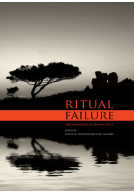Google Books previews are unavailable because you have chosen to turn off third party cookies for enhanced content. Visit our cookies page to review your cookie settings.
Evolution of burial practices within Neolithic cist graves (Hardback)
Tracking funerary customs in the Western Alpine region (4800–3800 BCE)
Imprint: Sidestone Press
Series: Open Series in Prehistoric Archaeology
Pages: 260
ISBN: 9789464280883
Published: 19th March 2025
Script Academic
Series: Open Series in Prehistoric Archaeology
Pages: 260
ISBN: 9789464280883
Published: 19th March 2025
Script Academic
Please note this book may be printed for your order so despatch times may be slightly longer than usual.
You'll be £90.00 closer to your next £10.00 credit when you purchase Evolution of burial practices within Neolithic cist graves. What's this?
+£4.99 UK Delivery or free UK delivery if order is over £40
(click here for international delivery rates)
Need a currency converter? Check XE.com for live rates
(click here for international delivery rates)
Need a currency converter? Check XE.com for live rates
In the 5th millennium BCE, the first farming societies in the Western Alps developed unique burial practices characterized by Chamblandes-type graves. These box-shaped graves, constructed from stone slabs or wooden planks, have intrigued archaeologists since the 19th century, particularly around Lake Geneva and the Upper Rhône Valley. This study delves into the origins, spread, and distinctive characteristics of these graves, especially their transalpine significance with an extensive focus on previously under-researched areas like the Italian Aosta Valley or the German-speaking part of Switzerland.
By significantly increasing the number of available radiocarbon dates, as well as comprehensively analyzing the grave goods and the treatment of human remains in the context of funerary practices, the study provides new insights into the chronology and regional variations of Chamblandes-type graves. This research reveals the contemporaneous emergence of the use of these graves in several Alpine valleys and the southern shore of Lake Geneva around 4800 BCE, as well as providing evidence for the process of their subsequent spread and sharp decline in use after 4000 BCE.
The findings reveal shared practices among these early farming communities, yet also indicate distinct funerary customs between inner Alpine valleys and the Swiss Plateau. Highlighting that local prehistoric societies in the Western Alpine region reacted similarly to the death of an individual within the community, as expressed by grave architecture and the treatment of human remains. Demonstrating additionally, that the Alps should not be understood as barriers, but as a conduit for social exchange and interaction across valleys and mountain passes more than 6000 years ago. This nuanced understanding is essential for future research, setting the stage for studies on the social structure, mobility, and diet of these Neolithic populations through paleogenetic and isotopic analyses.
Other titles in the series...
Other titles in Sidestone Press...





















